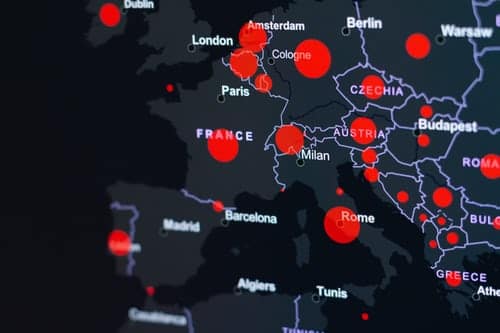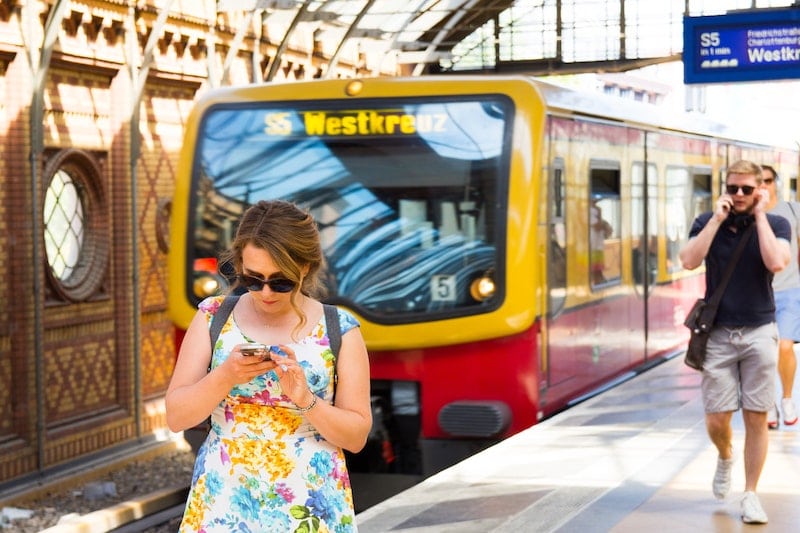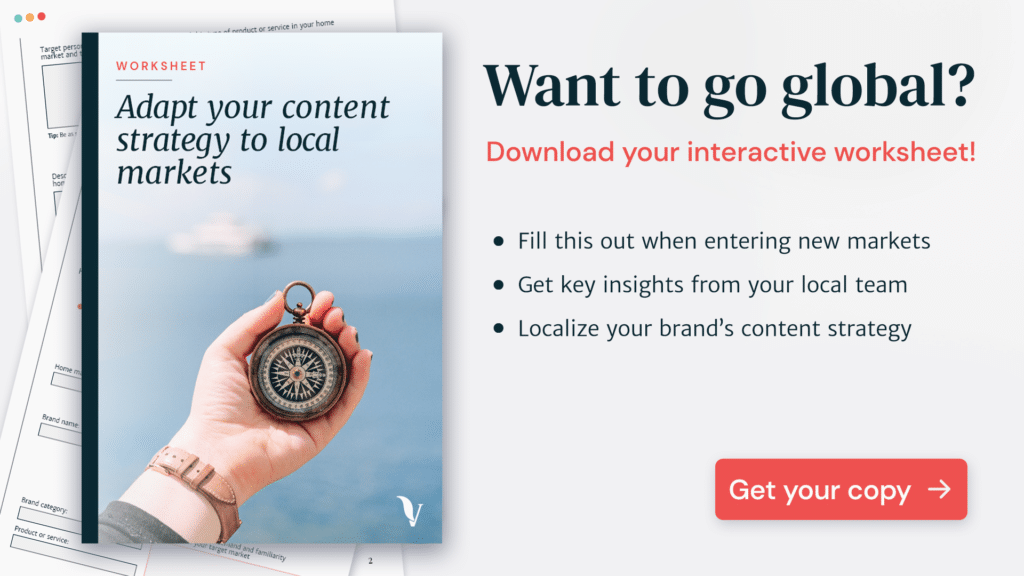Europe’s content marketing industry is unique, mainly due to the variety of linguistic and cultural differences that span the continent. What’s more, purchasing power in Luxemburg is drastically different from Moldova. As is education, geography, climate, business practices, greetings and dinner time. All of these differences need to be considered when launching marketing campaigns in Europe.
It’s a common misconception that Europeans are comfortable speaking English; the truth is they much prefer to speak in their own language, especially when it comes to buying. When marketing your product to European audiences, you need to appeal to people’s emotions and communicating in their native language is the best way to build trust.
In fact, according to a study by the European Commission, 42% of EU internet users said they never purchase products and services in languages other than their own.
Localizing your content to your target audience is undoubtedly the best way to approach content marketing in Europe. This isn’t easy, seeing how complex and diverse the continent is. To give you an idea:
Europe is home to over 700 million people. There are 28 official EU countries and 24 official working languages: Bulgarian, Croatian, Czech, Danish, Dutch, English, Estonian, Finnish, French, German, Greek, Hungarian, Irish, Italian, Latvian, Lithuanian, Maltese, Polish, Portuguese, Romanian, Slovak, Slovene, Spanish and Swedish. Yet this number doesn’t take into account many local languages and dialects that are still spoken today, not to mention Russian (which is the sixth most commonly spoken language in Europe, yet not an official EU language).
Check out our free interactive worksheet to adapt your content strategy to local markets:
Here at VeraContent, we’re not only specialized in adapting content to European markets, but we also interview marketing experts across Europe on The Content Mix podcast. You can check out their interviews and also see quotes from them sprinkled throughout this article, like the one below.
“The numbers make it clear that creating content in local languages will give us greater reach.”
– Sara Cronsioe, Sweden-based content lead
Let’s start off with a great example of European content marketing done right: Innocent Drinks.
Case study: Innocent Drinks
Innocent drinks is a leading smoothie company that’s popular in 15 countries across Europe. You’ll see on its friendly and colorful website that you can select language options and social media accounts for each market it operates in.

Yet the real key to Innocent Drinks’ success in Europe wasn’t purely translation, but rather its ability to adapt to each market accordingly while staying true to its brand.
The company’s founder, Adam Balon, shared his lessons for international growth in an insightful article. Balon said that when they were first marketing their natural juices in French, they’d get smirks and giggles.
They asked a native speaker what was so funny and they soon found out that their translation of “no preservatives” meant they were selling “condom-free” drinks in French. Ay mon dieu. If that doesn’t teach you a lesson about the importance of accurate translations, then nothing will.
Yet language wasn’t the only obstacle.
When Innocent Drinks tried to enter Austria for the first time, sales were so low that they were about to shut down the mission altogether. They tried selling the drinks at independent cafes and health food stores as they did in Britain.
But Austrian purchasing behavior was totally different. Austrians tend to go to restaurants at lunch and order schnitzels (and other food, but mainly schnitzels), so there isn’t the same demand for those types of stores. Luckily, one of their local members had the idea of having supermarkets sell the drink front of store. And soon enough, Innocent Drinks was bringing in almost as many sales as in the UK.
In both cases, it was local team members who helped Innocent Drinks figure out the problem and find the right solution.
The biggest takeaways from Innocent Drinks when it comes to expanding in Europe are the following:
- Stay true to your brand’s message
- Invest in accurate translations
- Hire local teams
- Adapt your brand to local markets
Now that we’re inspired by Innocent Drinks, here are some more tips to keep in mind when marketing your business to European audiences.

Guide to content marketing in Europe: Adapt to your audience
1. Choose which countries to enter
You should do specific research on which countries have the most potential customers for your business, depending on your industry and goals. The largest markets in the EU are Germany, France and the UK, followed by Italy, Spain and Poland. But there are many smaller countries with high buying power, such as Norway.
Instead of marketing to the entire EU, you may benefit from starting off with just one country. Entering Germany alone means potentially reaching over 80 million people. Or you could choose one European language to start with. For example, there are several other German-speaking countries, including Austria and Switzerland (the latter has four national languages).
See also: US vs. German marketing content: Why localization is key
It all depends on your goals, your target audience, the results of your research, and your marketing localization budget.
“Localized marketing is black and white—not gray. Whatever you make has to be relevant to your audience, market and channels. If it isn’t, then it doesn’t work.”
Nadine Leighton, UK-based head of marketing EMEA & APAC

2. Take into account local languages for region-specific marketing
As mentioned earlier, there are 24 official working languages in the EU, and this number doesn’t take into account all the local languages and dialects that are still spoken.
For example, here in Spain, where I’m based, the official language is Castellano (Spanish). But there are several other recognized languages including Catalan in Catalonia, Galician in Galicia, and Basque in the Basque Country.
If you were to launch a region-specific marketing campaign in Spain, you would certainly benefit from translating into these local languages.
“How do you build trust? There are many pieces to the puzzle, but language and localization are two big parts of it.”
Jordanna Ber, head of localization at Rover
See also: 5 ways to ensure a quality localization – even if you don’t speak the language
3. Invest in top-quality translations
Don’t assume that all Europeans want to receive information in English. In most cases, it’s safe to say that Europeans prefer to speak in their mother tongue, which is why high-quality translations are crucial.
There are certain exceptions, however. For example, in sectors such as investment banking or the medical field, English is generally accepted as the most used language. And if you’re using visual content exclusively then you may also be able to get away without translating.
But if you’re an online retailer, you’d definitely need to offer accurate translations to gain trust from buyers. Would you purchase something on a mobile website in a language that’s not your own? Probably not…
It’s also important to note that some European countries are home to several languages. If we go back to Innocent Drinks’ website, when you click on the Belgium option, you’ll find you can choose to see the website in either Flemish or French, as both languages are spoken there.
So to make a long story short: work with local experts who can craft the most relevant content for local audiences.
See also: Everything you need to know about creative translation
“Marketing in Europe means tailoring our messages. We can’t convince people to believe in what we’re doing in the same way in different countries.”
Evgeni Hristov, Netherlands-based marketing & communications manager

4. Be sensitive to cultural differences
Cultural differences count. Greek and British buyers shouldn’t be expected to react to the same marketing tactics in the same way.
Given the fact that there are so many cultural differences from country to country (and from region to region), you’ll have to tailor all your marketing campaigns accordingly. That’s why your initial research should include demographics, buying patterns and cultural preferences.
Both the local language and theme should be adapted to each individual European market. Each one has their own holidays, religious traditions, schedules, and weather! For example, if you’re marketing outdoor garden furniture, you might want to choose Mediterranean countries rather than Scandinavian.
Again, this is why it’s important to work with local teams or professionals with a deep understanding of the markets you’re entering.
“Every country that you work in will have different cultures and practices. You and your team need to make sure that you’re aware of them so that you don’t do something that might jeopardize your plans.”
– Payam Edalat, global communications social media producer at Philip Morris International
See also: Content marketing in Spain vs. the US: 9 key differences
5. Say yes to multilingual content and social media
If you’re translating your website and social media accounts into different languages, you’ll also have to take into account cultural tidbits and nuances. Even the use of images needs to be carefully assessed for each market.
“Images tell a story, and they can tell a different story in different markets—you need to make them resonate with your users.”
– Anne-Sophie Delafosse, localization manager at Deliveroo
Here at VeraContent, we specialize in localizing content and manage several social media accounts in different European countries. While we have one multilingual content calendar, we always work with local community managers who can help us make sure all the content is not only well translated, but also relevant and timely for each market.
Here are a few tips for running social media in different languages:
- Take into account major holidays in each market and add them to your editorial calendar in advance, so your content is fresh and topical.
- Let’s say you’re launching a promotion on social media in Germany and France—in addition to top-quality translations, you’ll also need to make sure the gift is appealing (and available) to both audiences.
- Create separate Facebook pages and Instagram accounts for each target market—it’s been shown that local Facebook pages outperform global ones by a long shot in terms of engagement and reach.
See also: 12 multilingual social media tips that really work
6. Pay attention to market maturity
Certain countries in Europe are more up to speed on the latest trends in marketing. But for the most part, the US is ahead of Europe when it comes to content marketing, from the latest automation tools to engaging and immersive content.
This can play to your advantage when entering Europe. But it’s important to do your research and find out which types of content will work best.

Content marketing in Europe in a nutshell
If you’re looking to market your business to European audiences, you’re going to need in-depth knowledge of purchasing behavior, market maturity, content preferences and most importantly, local languages.
Do solid research to make sure you know which countries to enter, depending on your field and target audience, and work with local experts so you can adapt your marketing campaigns.
Need help marketing your brand in Europe? At VeraContent, we’re experts at tailoring your message to European audiences. Get in touch with us today!


